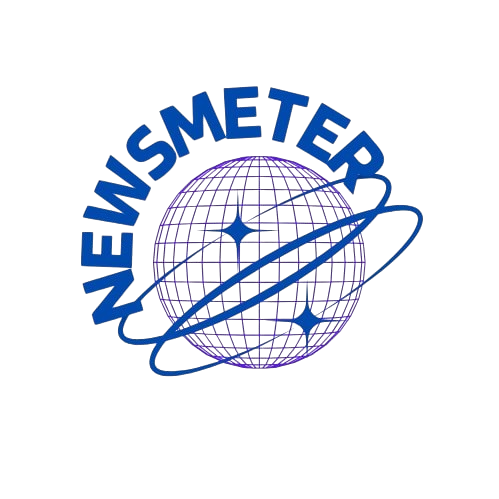The internet is made up of a massive collection of web pages, each meticulously crafted using a combination of HTML, CSS, JavaScript, and other web languages. The content you see in your browser—the images, text, and interactive elements—is the result of underlying code working in harmony. The views-source:https://roobx4uuu.blogspot.com command is a tool that allows users to inspect this underlying code, revealing the structural and stylistic foundations of any given web page.
This article will explore the View Source command’s utility, its function in different browsers, the various components it reveals, and how developers and everyday users alike can benefit from this often-overlooked feature.
What is the views-source:https://roobx4uuu.blogspot.com Command?
The views-source:https://roobx4uuu.blogspot.com command enables users to see the HTML (Hypertext Markup Language) code of a web page directly from their browsers. HTML is the core language used to create web page structures, defining elements like headers, paragraphs, links, images, and forms. By viewing the source code, users can gain insights into how a page is built, discover embedded links, and better understand the page’s overall structure.
Unlike “Developer Tools” or “Inspect Element,” which often offer advanced debugging and design inspection capabilities, the View Source command focuses solely on displaying the HTML code of a page as it was initially rendered by the server.
How to Use the View Source Command in Different Browsers
The views-source:https://roobx4uuu.blogspot.com is accessible in most web browsers with a simple click or keyboard shortcut. Here’s a breakdown of how it works across popular browsers:
1.Google Chrome
- Right-click on the web page and select “View Page Source.”
- Alternatively, use the keyboard shortcut
Ctrl + U(Windows) orCmd + Option + U(Mac).
2. Mozilla Firefox:
- Right-click on the web page and select “View Page Source.”
- Or use the keyboard shortcut
Ctrl + U(Windows) orCmd + U(Mac).
3. Microsoft Edge:
- Right-click on the page and choose “View Page Source” from the context menu.
- Use the keyboard shortcut
Ctrl + U.
4. Safari (MacOS):
- Go to “Develop” in the Safari menu and choose “Show Page Source.”
- If “Develop” is not visible, you can enable it in Safari’s preferences under the “Advanced” tab.
5. Opera
- Right-click on the page and choose “Source” or use
Ctrl + U(Windows).
The source code will then open in a new tab or window, displaying the raw HTML and giving you access to the code that constitutes the page’s content and layout.
Exploring HTML Structure Through View Source
When you open a web page’s source, you’ll first notice the HTML tags surrounding the entire document. These tags contain metadata, structural information, and the actual content displayed to the user. The basic structure of an HTML document typically includes:
- DOCTYPE Declaration: Defines the document type and HTML version.
- HTML Tag: Encompasses the entire HTML document.
- Head Tag: Contains metadata, links to stylesheets, scripts, and SEO information.
- Body Tag: Houses the visible content of the web page, such as text, images, and links.
Each section serves a unique purpose, and understanding it can give you insight into how a page is designed and structured.
1. Metadata in the <head> Section
The <head> section contains important metadata that informs search engines, web browsers, and other tools about the page’s properties. Here, you might find:
- Title Tag: Defines the page title displayed on the browser tab.
- Meta Tags: Include keywords, descriptions, and other SEO details.
- Link Tags: Reference external resources like CSS files and fonts.
- Script Tags: Include or reference JavaScript for added functionality.
Viewing this metadata can help you understand the developer’s intentions for how the page should appear and function.
2. Visible Content in the <body> Section
The <body> section contains the visible part of the page, rendered by the browser to display information to the user. This part includes:
- Headers and Text: Structured with
<h1>,<h2>,<p>, and other tags, creating hierarchy and readability. - Images: Incorporated using
<img>tags with attributes likesrcfor source andaltfor alternative text. - Links: Managed with
<a>tags for navigation within and outside the website. - Tables and Forms: Useful for displaying data and collecting user input.
- Scripts and Widgets: Additional interactive components, often found towards the end of the body to optimize loading times.
By examining the source code, you can see exactly how elements are organized and layered, giving insight into layout and structure choices.
CSS and JavaScript in the View Source
While HTML forms the skeleton of a web page, CSS (Cascading Style Sheets) and JavaScript bring it to life with styling and interactivity. In the View Source display, you will often see links to external CSS files, as well as internal styles within <style> tags.
- CSS Links: By following the link in a
<link>tag, you can view the CSS file that dictates colors, fonts, spacing, and layout. This code is separate from HTML to ensure a clean structure and allow easier updates to the website’s design. - JavaScript Links: JavaScript often appears in
<script>tags, either linking to an external file or embedded directly in the HTML. JavaScript adds interactivity and handles dynamic content, user input, and various effects.
Viewing these resources gives a better understanding of how style and interactivity are applied to a page. If a script is linked externally, you can open that link separately to explore the code.
Uses and Benefits of the View Source Command
1. Learning Tool for Beginners
For new web developers, the View Source command serves as a valuable learning tool. It allows beginners to see real-world examples of HTML, CSS, and JavaScript in action, demystifying web design concepts and encouraging experimentation.
2. Understanding Web Page Structure
Viewing source code is helpful for gaining insight into a website’s layout and structure. Developers often use it to understand how complex designs are implemented and gain inspiration for their projects.
3. Troubleshooting and Debugging
The View Source command can also aid in troubleshooting when a page doesn’t load correctly. By comparing the displayed source with expected code, developers can quickly spot any missing elements or syntax errors.
4. SEO Analysis
SEO (Search Engine Optimization) experts can use the View Source command to analyze a page’s metadata, headers, and structured data. This insight reveals how a website is optimized for search engines and can help identify areas for improvement.
5. Accessing Hidden Content
Some content, like metadata or hidden text used for SEO, may not appear on the screen but is still present in the source code. Viewing the source reveals this content, which may include meta descriptions, keywords, and more.
Limitations of the View Source Command
While the View Source command is powerful, it has certain limitations. The displayed source only shows the initial HTML and static assets but doesn’t reveal dynamically generated content or server-side code (like PHP or database queries). For a deeper analysis, developers typically rely on advanced tools like “Inspect Element” or developer consoles.
1. Hidden JavaScript Content
Content generated dynamically through JavaScript, such as data fetched from an API, won’t appear in the static source code. To analyze such content, it’s necessary to use “Inspect Element” or monitor network activity in developer tools.
2. Limited CSS and Style Context
While the source code shows links to CSS files, it doesn’t provide a visual representation of how CSS impacts each element. For a complete understanding, it’s better to use a tool that visualizes CSS application on specific elements.
3. Server-Side Code Absence
Server-side code, such as PHP, Node.js, or Python scripts, is executed on the server before HTML is sent to the client. Therefore, View Source can’t display this code, as it’s not part of the rendered page sent to the browser.
Security Considerations
The View Source command only provides access to public code, and it doesn’t pose a security risk. However, poorly designed websites may inadvertently expose sensitive information, such as API keys or configuration details, in their source code. Developers should carefully audit the code they expose to avoid unintentional data leaks.
Conclusion
The views-source:https://roobx4uuu.blogspot.com command is a powerful yet straightforward tool that provides a gateway to understanding web pages and the code behind them. For aspiring developers, it offers valuable insight and a real-world look into how web technologies come together. For seasoned developers and SEO professionals, it serves as a means to analyze, troubleshoot, and even draw inspiration. Although it doesn’t reveal server-side code or dynamically generated content, it remains an essential feature for anyone interested in understanding the basics of web design and development.
By regularly examining source code, users can deepen their understanding of web technologies and leverage this knowledge for both personal projects and professional applications. Whether you’re a developer, designer, or simply a curious internet user, the View Source command offers a unique look at the foundational layers of the web.
Liked it? feel free to explore and get more insights into trending topics on newsmetre.com














